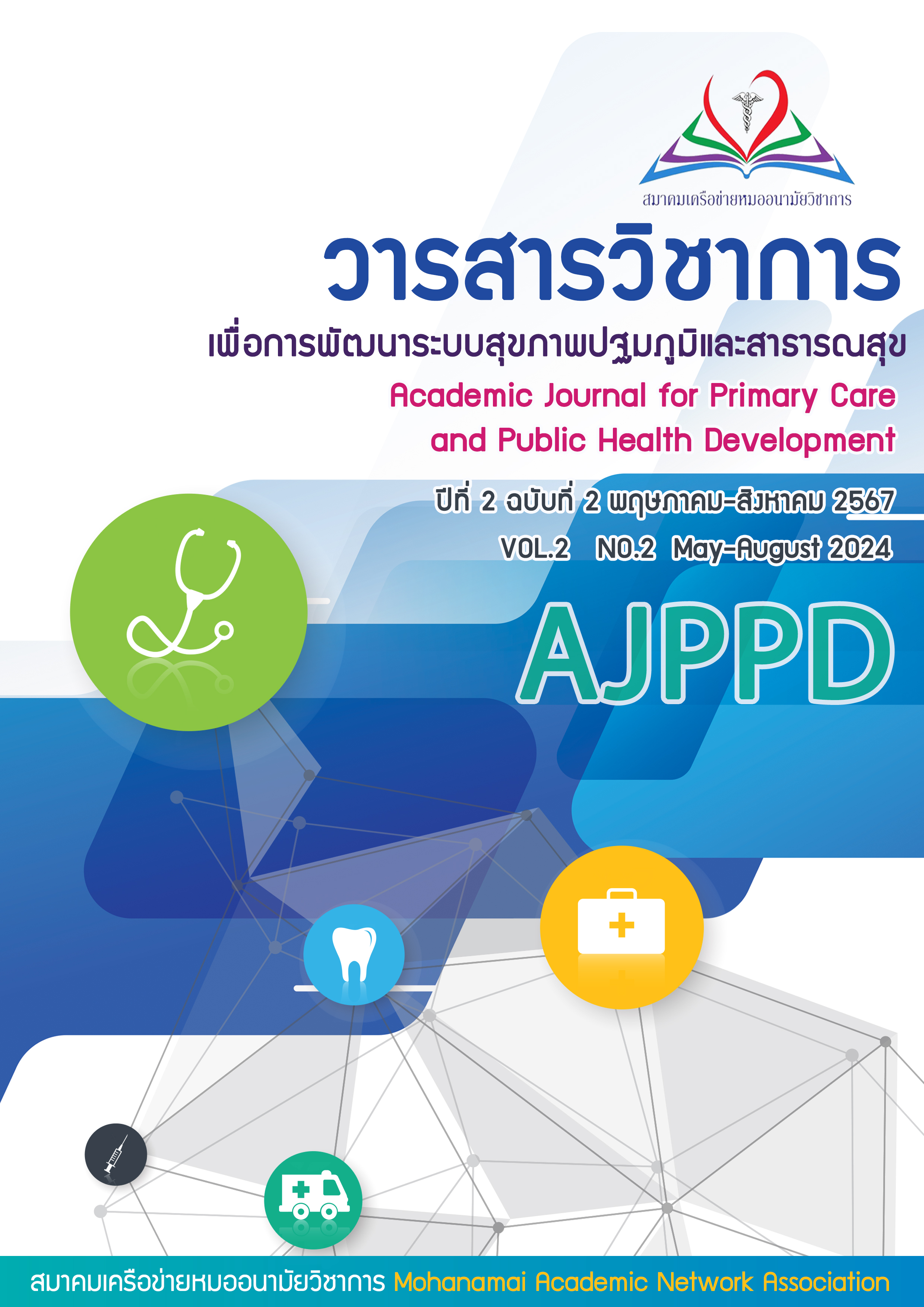The Effect of Patient Emergency Referral Guidelines in Nam pad hospital, Uttaradit province.
Keywords:
Patient transfer guidelines, Accident and emergency, Quality of careAbstract
This research aimed to study the effects of implementing patient transfer guidelines for accident and emergency cases on the quality of care and services at Nam Pad Hospital, compare the satisfaction of medical personnel, and analyze factors contributing to the success and obstacles in adopting these guidelines. The study employed a quasi-experimental design with a single-group pre-test and post-test approach. The sample consisted of 21 professional nurses working in patient transfer. The research instruments included patient transfer guidelines, clinical data recording forms, transfer quality assessment forms, and satisfaction questionnaires. Data were analyzed using descriptive statistics and the Wilcoxon signed-rank test.
The results showed that after implementing the guidelines, the number of patients transferred according to the protocol increased to 93.3%. Complications during transfer decreased from 11.1% to 6.7%, and the average transfer time reduced from 60 to 45 minutes. Patient and family satisfaction increased from 75.6% to 91.1%, while the survival rate of critically ill patients being transferred improved from 84.4% to 91.1%. Nurses' satisfaction with the guidelines increased significantly (p < 0.001). In conclusion, the implementation of accident and emergency patient transfer guidelines enhanced transfer efficiency, reduced complications, and increased medical personnel satisfaction. Key factors contributing to success included administrative support, staff training, and multidisciplinary team involvement.
References
นันท์นลิน นาคะกุล. (2557). ระบบส่งต่อผู้ป่วยปลอดภัยไร้รอยต่อ. โรงพยาบาลลำปาง: เอกสารอัดสำเนา.
อรวรรณ นาคคำ และไพบูลย์ ดาวสดใส. (2560). การประเมินผลการดำเนินงานของระบบส่งต่อผู้ป่วยเบาหวานระหว่างโรงพยาบาลชัยภูมิและเครือข่ายบริการปฐมภูมิในเขตอำเภอเมือง จังหวัดชัยภูมิ. วารสารเภสัชศาสตร์อีสาน, 13 (2): 67-79.
Brown, D., Smith, E., & Clark, L. (2021). Effectiveness of SBAR communication in emergency patient transfers. Emergency Medical Journal, 38(5), 345-350. https://doi.org/10.1136/emermed-2020-209854
Davis, F., Lee, G., & Martinez, H. (2018). Management support and interdisciplinary teamwork in implementing new transfer protocols. Journal of Healthcare Leadership, 10, 67-75. https://doi.org/10.2147/JHL.S172056
Jones, M., Taylor, R., & Parker, S. (2019). Training and standard forms: Enhancing efficiency in patient transfers. Healthcare Management Review, 44(3), 234-242. https://doi.org/10.1097/
Polit, D. F., & Beck, C. T. (2012). Nursing research (9th ed.). Philadelphia: Lippincott Williams & Wilkins.
Smith, A., Johnson, B., & Williams, C. (2020). The impact of high-standard patient transfer protocols on complication rates and patient survival. Journal of Emergency Medicine, 45(2), 123-130. https://doi.org/10.1016/j.jemermed.2020.01.001
Wilson, J., Thomas, K., & Moore, A. (2017). Continuous improvement in patient transfers through monitoring and evaluation systems. International Journal of Health Planning and Management, 32(4), 456-468. https://doi.org/10.1002/hpm.2407
World Health Organization. (2019). Emergency care systems for universal health coverage: ensuring timely care for the acutely ill and injured. Director-General, A72/31. [cited 2023 August 21]. Available from: https://apps.who.int/gb/ebwha/pdf_files

Downloads
Published
How to Cite
Issue
Section
License

This work is licensed under a Creative Commons Attribution-NonCommercial-NoDerivatives 4.0 International License.




